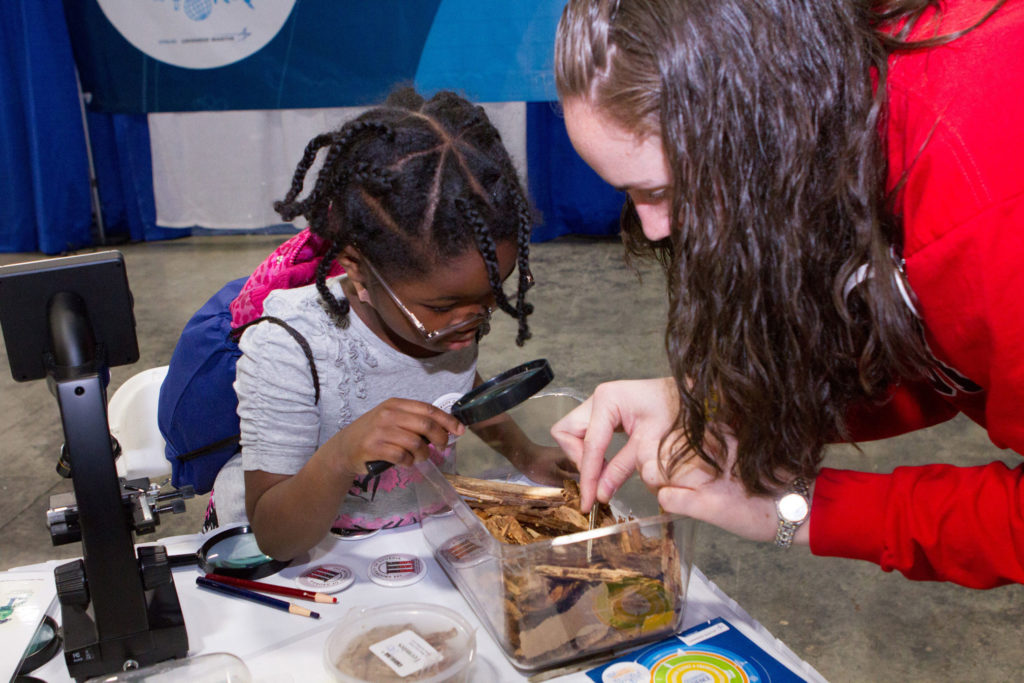The 6-year-old boy spotted the microscopes at UGA’s bioenergy exhibit and pulled his parents forward.
“I want to see!” he exclaimed. Anna Karls, an associate professor of microbiology, was happy to help.
“I showed him how to set up the slide with the microbial contents from the hindgut of a termite,” said Karls.
The microscope was part of a larger interactive exhibit on the biology of sustainable energy production at the second annual USA Science and Engineering Festival, held this spring in Washington, D.C. During the event, Karls and five graduate students from the microbiology department in the Franklin College of Arts and Sciences showed visitors how microbes convert garbage and waste into energy capable of powering cars and homes.
The festival also featured technology demonstrations, contests, more than 3,000 exhibits and performances by television personalities, athletes and comedians.
In addition to showing how microbial flora in termite guts break down wood into car ethanol, the UGA exhibit, “The Power of Microbes,” also gave festival attendees a chance to observe how the microbes in garbage generate electricity-producing methane. More than 1,000 students and parents visited the UGA exhibit, said Karls. Festival organizers estimated that more than 150,000 people attended the two-day event.
The UGA exhibit was sponsored by the Office of the Provost, the Office of the Vice President for Research, the Graduate School, the Franklin College, the department of microbiology and the Fanning Institute.
Margie Lee, a professor of population health in the College of Veterinary Medicine, discussed research careers with high school students at another booth sponsored by the Office of Undergraduate Admissions, the Graduate School, the Biomedical and Health Sciences Institute and the department of population health.
“It was refreshing to see kids and parents engaging in science,” said microbiology graduate student Claire Edwards, one of the UGA volunteers. “Overall it was a very rewarding experience.”
